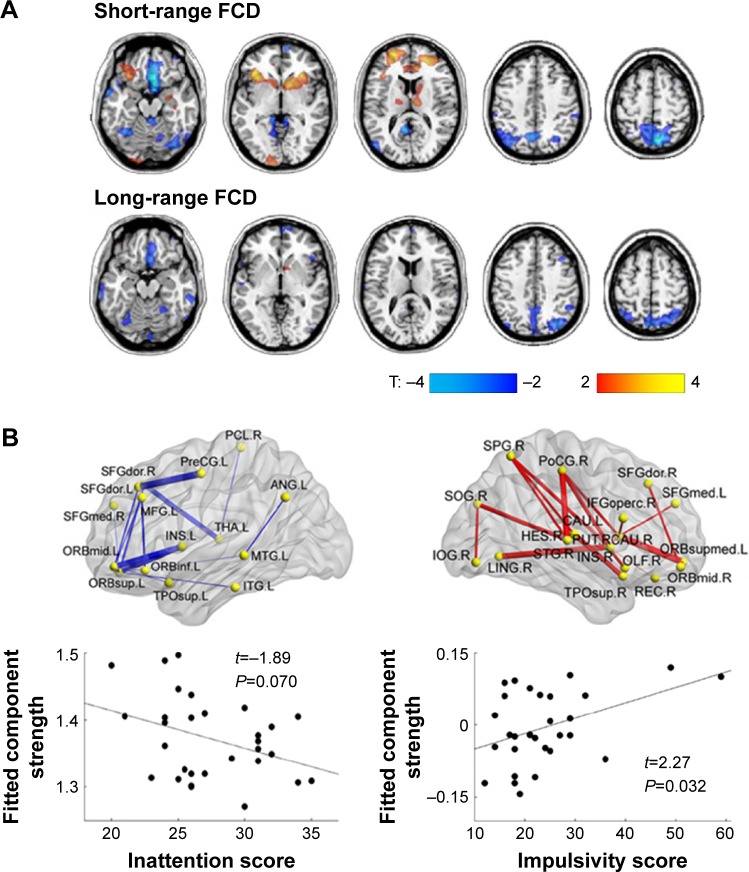Figure 2.
Disturbed connectivity in ADHD.
Notes: (A) Decreased or increased functional connectivity density (FCD) in ADHD patients compared with the healthy controls. (B) Decreased or increased white matter connections in ADHD participants compared with healthy controls and their relationships with the clinical characteristics of the patients. Blue curve: the significantly decreased network-based statistic (NBS) component; red curve: the significantly increased NBS component. (A) Adapted from Biological Psychiatry, 71(5), Tomasi D, Volkow ND, Abnormal functional connectivity in children with attention-deficit/hyperactivity disorder, 443–450, Copyright © 2012, with permission from Elsevier.48 (B) Adapted with permission of Society for Neuroscience, from Probabilistic diffusion tractography and graph theory analysis reveal abnormal white matter structural connectivity networks in drug-naive boys with attention deficit/hyperactivity disorder, Cao Q, Shu N, An L, et al, 33(26), Copyright © 2013; permission conveyed through Copyright Clearance Center, Inc.52
Abbreviations: ADHD, attention deficit/hyperactivity disorder; SFGdor, superior frontal gyrus, dorsolateral; SFGmed, superior frontal gyrus, medial; ORBmid, middle frontal gyrus, opercular part; ORBsup, superior frontal gyrus, orbital part; ORBsupmed, superior frontal gyrus, medial orbital; ORBinf, inferior frontal gyrus, orbital part; MFG, middle frontal gyrus; IFGoperc, inferior frontal gyrus, opercular part; INS, insula; THA, thalamus; CAU, caudate nucleus; PUT, lenticular nucleus, putamen; HES, heschl gyrus; PreCG, precentral gyrus; PoCG, postcentral gyrus; PCL, paracentral lobule; SPG, superior parietal gyrus; ANG, angular gyrus; TPOsup, temporal pole superior temporal gyrus; MTG, middle temporal gyrus; ITG, inferior temporal gyrus; STG, superior temporal gyrus; IOG, inferior occipital gyrus; SOG, superior occipital gyrus; LING, lingual gyrus; R, right; L, left.

